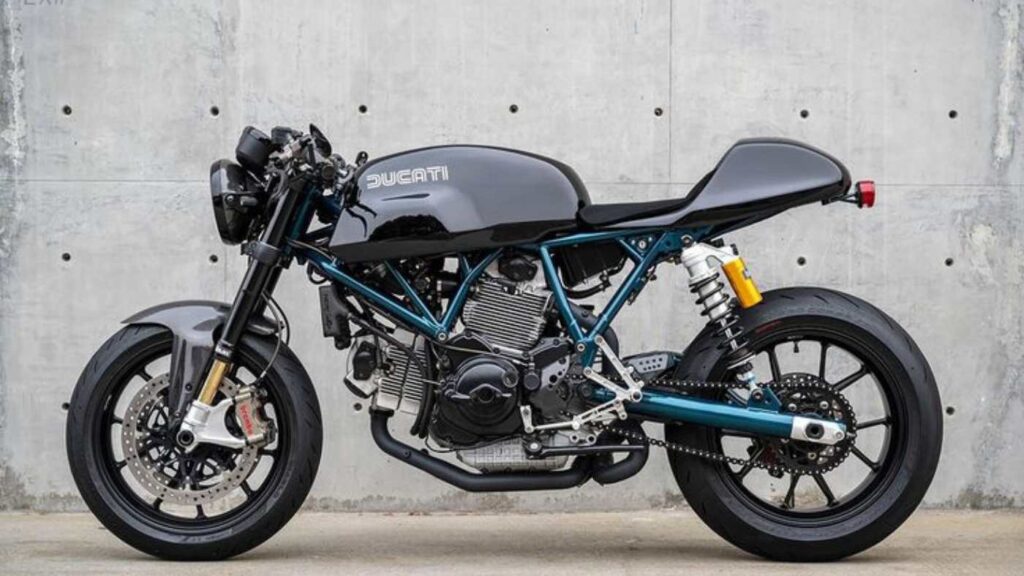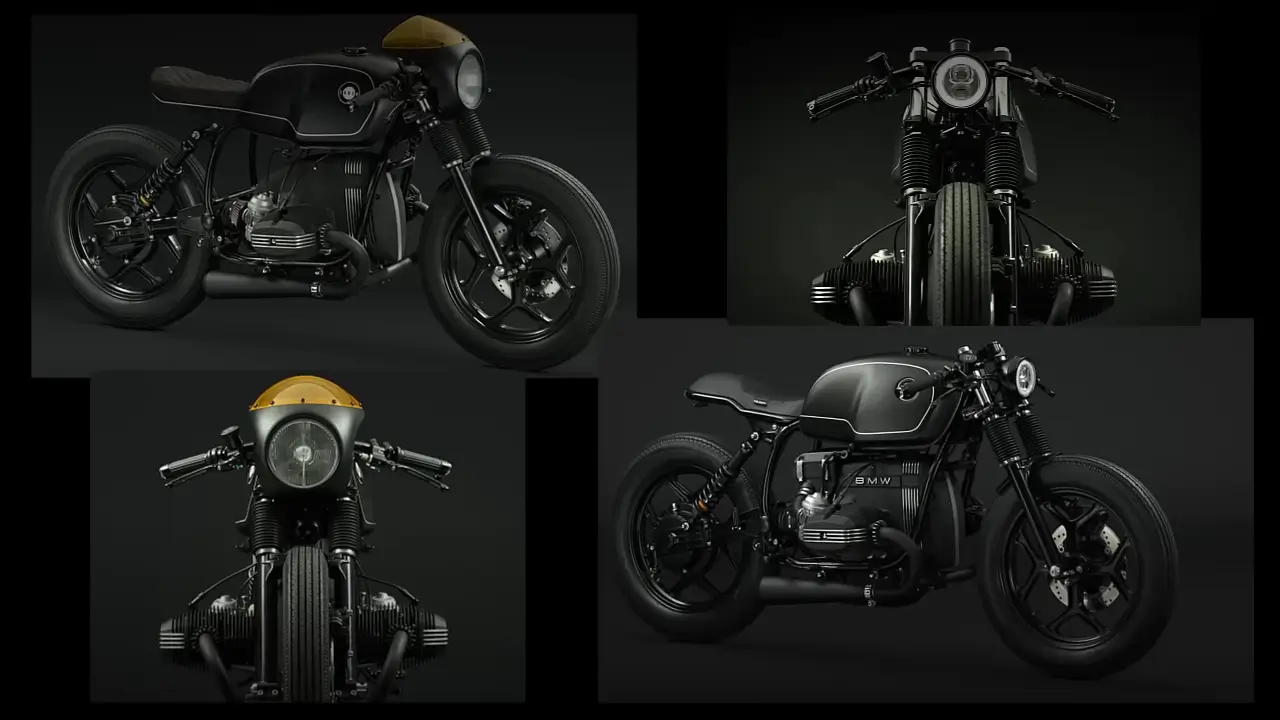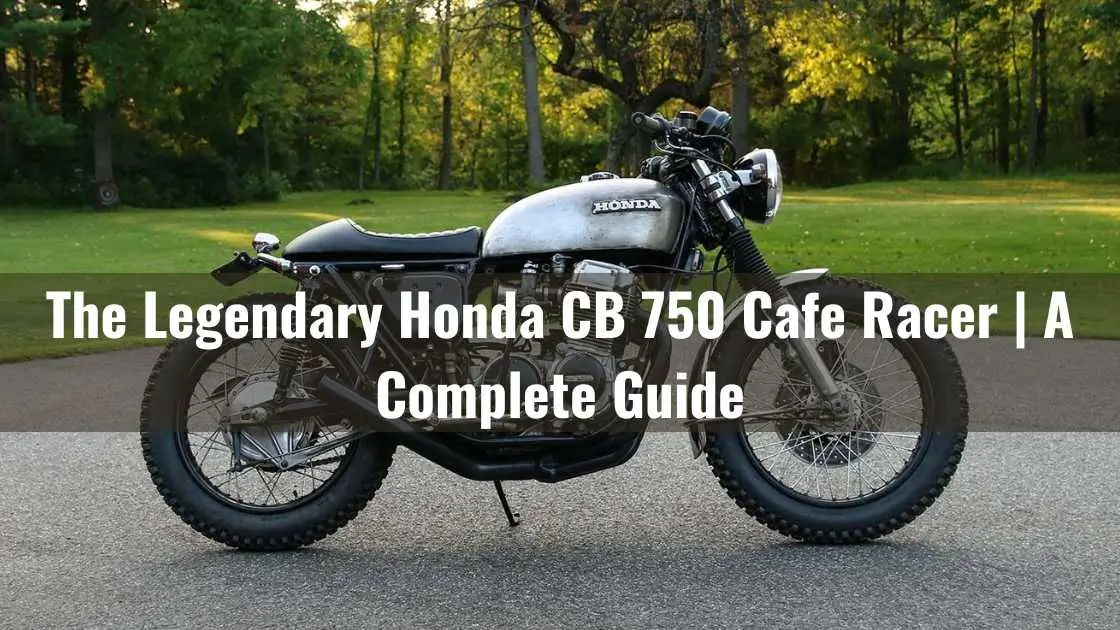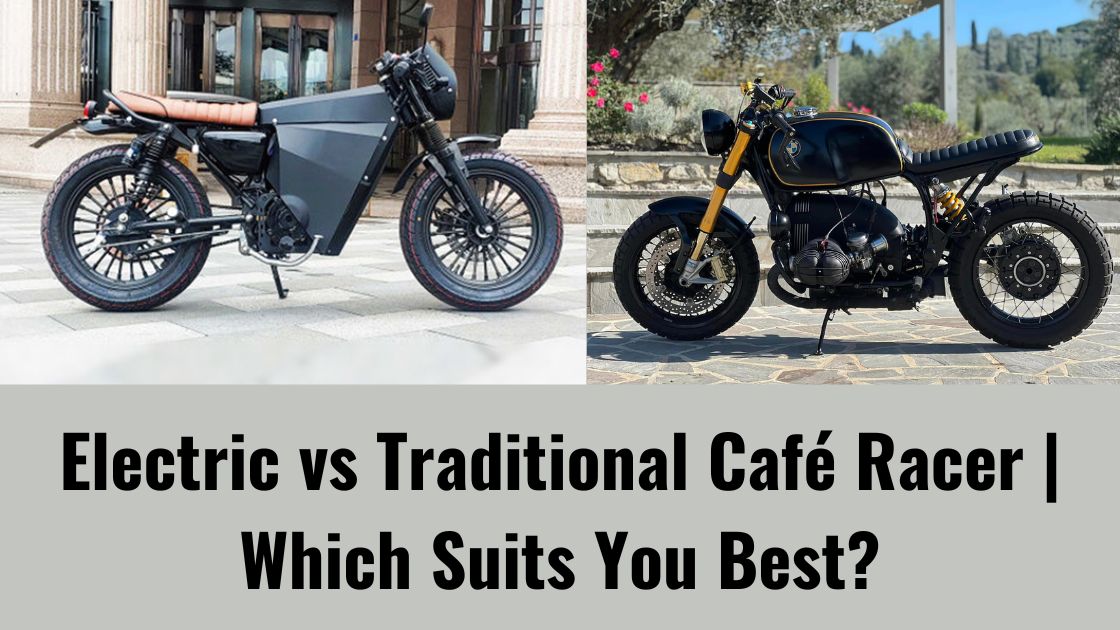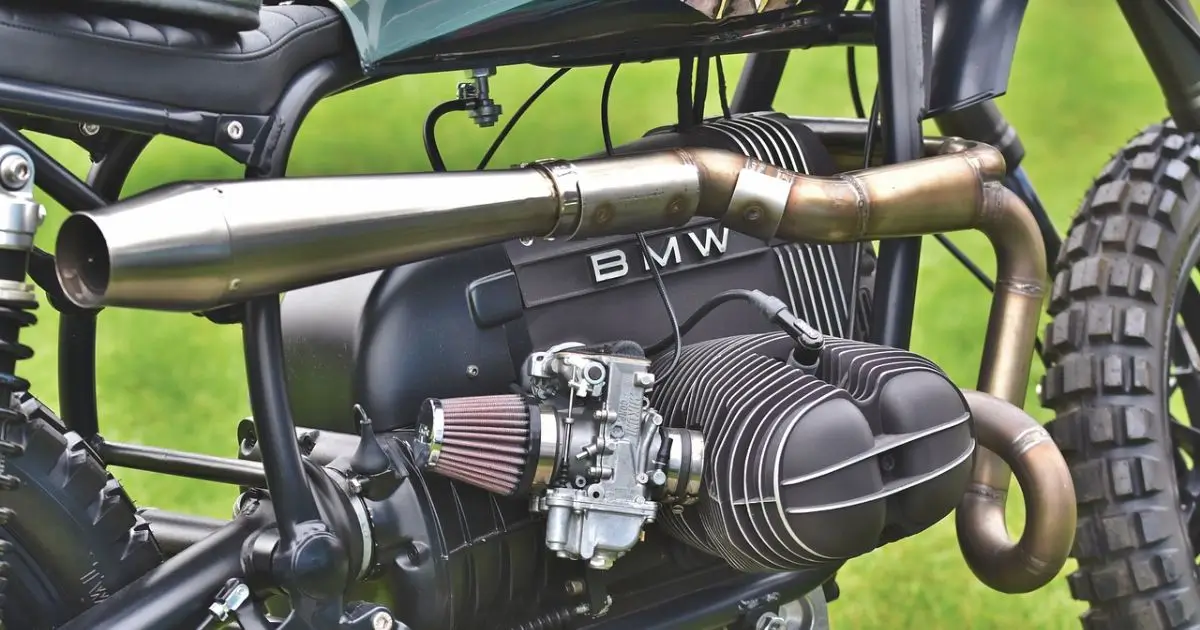Table of Contents
ToggleDucati cafe racers are motorcycles known for their unique style, speed, and Italian design. They are popular because they combine classic looks with modern performance. These bikes are light, fast, and built for short, quick rides.
This guide explains everything about Ducati cafe racers. It covers their history, popular models, and how they became part of motorcycle culture. It also helps readers understand how to customize these bikes and what to check before buying one.
Ducati has made many famous cafe racer models. Each model has a special design and features that make it different. Riders can also modify their Ducati cafe racer to reflect their personal taste and style.
This article helps readers learn, explore, and choose the best Ducati cafe racer for their needs.
What is a Ducati Cafe Racer?
A Ducati cafe racer is a type of motorcycle made by Ducati. It is designed to look simple, clean, and sporty. This style of motorcycle became popular because it offers both speed and style in one machine. A cafe racer usually has a small fuel tank, a narrow seat, and a low handlebar. These features help the rider lean forward and ride faster on city roads.

Ducati cafe racers are different from regular motorcycles. They have a lightweight frame for better control. Their engines are powerful enough for short-distance, fast rides. They also have a special sound from the exhaust, which many riders enjoy. These bikes are not made for long highway travel. They are best for short, exciting rides in the city or on country roads.
People like Ducati cafe racers because they show a mix of tradition and modern design. Riders can feel both old racing history and new technology in one bike. Ducati uses quality materials and careful design to make each model attractive and strong. These features make Ducati cafe racers popular among riders who want speed, style, and history together.
A Brief History of Ducati Cafe Racers
The history of Ducati cafe racers started in the 1960s. During this time, young motorcycle riders in Europe wanted faster bikes for city streets. These riders modified their motorcycles to look lighter and race-ready. They focused on speed, control, and style. This custom style became known as a cafe racer because riders often met at cafes after short, fast rides.
Ducati, an Italian motorcycle brand, saw this trend and joined the movement. The company began producing motorcycles with a sporty design and racing features. In the 1970s, Ducati became famous for building powerful engines and lightweight frames. Models like the Ducati 750 Sport gained attention for their performance and unique look.
In later years, Ducati continued to develop cafe racer models. The company introduced bikes that combined modern technology with classic cafe racer design. Ducati models kept the slim body, small seats, and sporty riding position. At the same time, they improved safety, engine power, and riding comfort.
Today, Ducati cafe racers represent a long tradition of style and speed. They are popular worldwide for their strong connection to motorcycle history and modern engineering. Many riders respect Ducati for keeping the cafe racer spirit alive while adding new technology and design improvements.
Popular Ducati Cafe Racer Models

Ducati has produced many cafe racer models over the years. Each model has its own design, features, and performance. These models reflect Ducati’s tradition of style and speed. They also offer different choices for riders with different needs.
Ducati Scrambler Cafe Racer

The Ducati Scrambler Cafe Racer is a modern motorcycle with a classic look. It comes with a small round headlight, a narrow seat, and a sporty handlebar. The engine is light but powerful enough for city rides. It has a simple design that reminds people of the early cafe racer style. This model is good for new riders who want comfort and easy handling.
Ducati Monster Cafe Racer

The Ducati Monster Cafe Racer is a custom version of the famous Ducati Monster. It has a more aggressive look and a stronger engine. The frame is compact, which helps with better control on sharp turns. This model is popular for riders who want a mix of cafe racer style and strong street performance.
Ducati 750 GT Cafe Racer

The Ducati 750 GT Cafe Racer is a vintage model from the 1970s. It was one of the first Ducati bikes used for racing and city rides. The 750 GT had a powerful engine for its time and a simple design with a large fuel tank and flat seat. It is now a rare collector’s item.
Ducati 900 SS Cafe Racer

The Ducati 900 SS Cafe Racer is known for its racing history. It has a sleek body, a strong engine, and a riding position for speed. This model became famous in motorcycle races in the late 1970s and early 1980s. Today, it remains a symbol of Ducati’s racing success.
Other Notable Models
Ducati has also made other cafe racer models. The Ducati SportClassic series brought back the vintage look with modern technology. The Ducati Paul Smart LE is a limited-edition bike made in honor of a famous racer. The Ducati GT1000 is another model that mixes classic design with new performance features.
How Can You Customize Your Ducati Cafe Racer?

Customizing a Ducati cafe racer gives riders the freedom to create a motorcycle that matches their personal taste. Many people modify their bikes for better looks, comfort, or riding performance. Below are the most popular parts riders change during customization.
Fuel Tank
The fuel tank is often replaced to improve style and weight balance. Common choices include:
- Smaller tanks for a lighter look
- Rounded tanks for a vintage cafe racer feel
- Custom painted tanks for a personal touch
Seat
The seat plays an important role in the overall design. Riders often prefer:
- Flat, narrow seats for a clean appearance
- Rear cowl (seat cover) for a classic racing style
- Leather seats for comfort and durability
Handlebars
Handlebars affect both comfort and riding posture. Popular options include:
- Low clip-on handlebars for a sporty look
- Café-style bars for aggressive riding positions
- Custom grips for better control
Exhaust System
Changing the exhaust system improves both performance and sound. Riders often choose:
- Lightweight exhaust pipes for speed
- Custom mufflers for a deeper sound
- Polished metal finishes for style
Suspension and Tires
Upgrading suspension and tires ensures smoother rides and better safety. Key modifications are:
- Adjustable suspension for comfort and handling
- Performance tires for strong road grip
- Lightweight wheels for speed
Paint and Design
Paint and graphic designs help personalize the bike. Many riders select:
- Classic colors like black, silver, or red
- Racing stripes or decals
- Matte or glossy finishes
Working with Professionals
Customizing a Ducati cafe racer requires skill and experience. It is best to:
- Consult a professional bike builder for complex changes
- Use high-quality parts to ensure safety
- Regularly check the bike after modifications
Buying Guide — How to Choose the Perfect Ducati Cafe Racer?

Choosing the right Ducati cafe racer depends on several important factors. Each rider has different needs, experience levels, and budgets. Understanding these points helps buyers make a smart decision.
1. Decide Your Budget
Budget is the first thing to consider. Ducati cafe racers come in different price ranges based on model, year, and condition.
- New models usually cost more but offer modern features.
- Vintage models may cost less but require more maintenance.
- Custom builds can have higher costs because of special parts and labor.
2. Understand Your Riding Style
Every rider uses their motorcycle differently. Before buying, think about how you plan to ride.
- For daily city rides, choose a lightweight and easy-to-handle model.
- For racing or long-distance rides, pick a bike with a stronger engine.
- For weekend rides or display, a vintage model may be a good choice.
3. Check Maintenance and Spare Parts Availability
Maintenance is a key part of owning a cafe racer. Ducati bikes need regular care. Always check:
- How easy it is to find spare parts.
- The cost of repairs and servicing.
- Availability of trained mechanics for Ducati motorcycles.
4. Decide Between New, Vintage, or Custom
There are three main types of Ducati cafe racers to choose from:
| Type | Features |
| New Models | Modern technology, warranty, low maintenance. |
| Vintage Models | Classic look, rare parts, higher care needed. |
| Custom Builds | Unique design, personalized style, higher cost. |
5. Know Where to Buy
Finding the right place to buy a Ducati cafe racer is important. Trusted sources include:
- Ducati dealerships for new models.
- Motorcycle auctions for vintage bikes.
- Custom bike shops for personalized builds.
- Online platforms like Cycle Trader, eBay, or local marketplaces.
6. Inspect Before Buying
Before buying any Ducati cafe racer, inspect the bike carefully. Look at:
- Engine condition and service history.
- Frame quality and any rust or damage.
- Tires, brakes, and suspension performance.
- Legal documents, including registration and insurance.
Ducati Cafe Racer Culture & Community
Ducati Owners Clubs and Official Events
Ducati enthusiasts often join official clubs to connect with other riders. These clubs organize events like group rides, meetups, and exhibitions. For example, the Ducati Official Club hosts various gatherings across different regions, allowing members to share their passion for Ducati motorcycles .
Online Forums and Communities
Many Ducati cafe racer owners participate in online forums to discuss modifications, share experiences, and seek advice. Websites like Ducati.ms and the Ducati Scrambler Forum offer platforms where riders can engage in conversations about their bikes, customization projects, and maintenance tips .
Social Media Engagement
Social media platforms provide spaces for Ducati cafe racer fans to showcase their motorcycles and connect with others. Enthusiasts often share photos of their bikes, discuss customization ideas, and organize informal meetups through groups on platforms like Facebook and Instagram.
Cultural Significance
The Ducati cafe racer community values the blend of classic motorcycle aesthetics with modern performance. This culture emphasizes individuality, craftsmanship, and a shared appreciation for the heritage of Ducati motorcycles. Riders often express their identity through personalized modifications and participation in community events.
Final Thoughts
Ducati cafe racers are more than just motorcycles. They represent a rich history of style, speed, and innovation. These bikes combine classic design with modern performance. They are built for riders who respect tradition but also enjoy new technology.
Every Ducati cafe racer model offers something special. Some are light and easy for city rides. Others have strong engines for racing or long-distance travel. Riders can also customize their bikes to reflect their personal taste. This freedom makes the Ducati cafe racer a perfect choice for motorcycle lovers.
The community around Ducati cafe racers continues to grow. Clubs, forums, and social media groups connect riders from around the world. These platforms help people share their passion, knowledge, and experiences.
Owning a Ducati cafe racer is not only about riding. It is about being part of a culture that values design, performance, and history. It offers a complete experience for those who love motorcycles and want to connect with a strong, global community.
FAQs
What is the average fuel consumption of a Ducati cafe racer?
The fuel consumption varies by model and riding conditions. For instance, the Ducati Scrambler Café Racer averages around 47 mpg (20 km/l) under standard conditions.
Is the Ducati cafe racer suitable for long-distance touring?
While Ducati cafe racers are designed for style and agility, they may not offer the comfort required for extended touring. The riding position and seat design are optimized for shorter, spirited rides.
Can beginners handle a Ducati cafe racer?
Ducati cafe racers, such as the Scrambler Café Racer, are manageable for riders with some experience. However, complete beginners might find the riding posture and power delivery challenging
What is the maintenance schedule for a Ducati cafe racer?
Maintenance schedules can vary, but typically, oil changes are recommended every 7,500 miles (12,000 km), with valve inspections around 15,000 miles (24,000 km). Always refer to the owner’s manual for specific intervals.
Are there aftermarket parts available for customizing Ducati cafe racers?
Yes, a wide range of aftermarket parts is available, including exhaust systems, seats, handlebars, and lighting options. These allow owners to personalize their bikes to their preferences.
How does the Ducati cafe racer compare to other cafe racers in the market?
Ducati cafe racers are known for their Italian design and performance. Compared to other brands, they offer a blend of modern technology with classic aesthetics, providing a unique riding experience.
What safety features are standard on Ducati cafe racers?
Modern Ducati cafe racers come equipped with features like ABS (Anti-lock Braking System) and traction control, enhancing rider safety during various riding conditions.
Is the Ducati cafe racer comfortable for daily commuting?
For short to medium distances, Ducati cafe racers can be suitable for daily commuting. However, the aggressive riding position might not be ideal for prolonged city traffic.
What is the resale value of Ducati cafe racers?
Ducati motorcycles generally maintain good resale value due to their brand reputation and build quality. However, factors like mileage, condition, and market demand can influence the resale price.
Are there any common issues reported by Ducati cafe racer owners?
Some owners have noted concerns about seat comfort and suspension stiffness. However, these can often be addressed through aftermarket modifications or adjustments.

